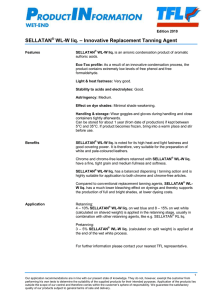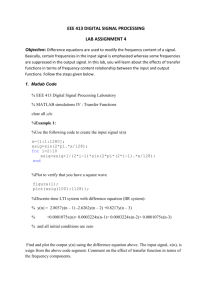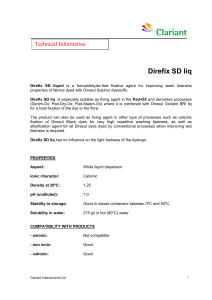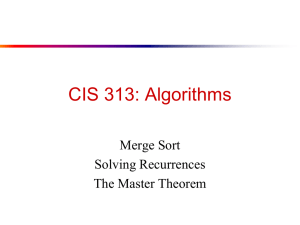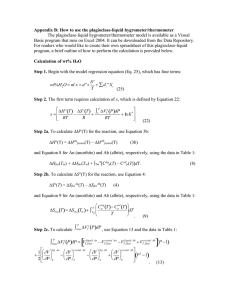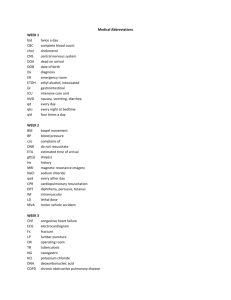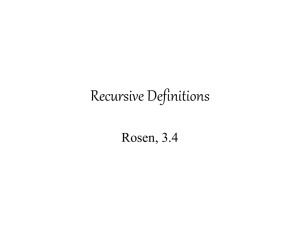Problem solutions
advertisement
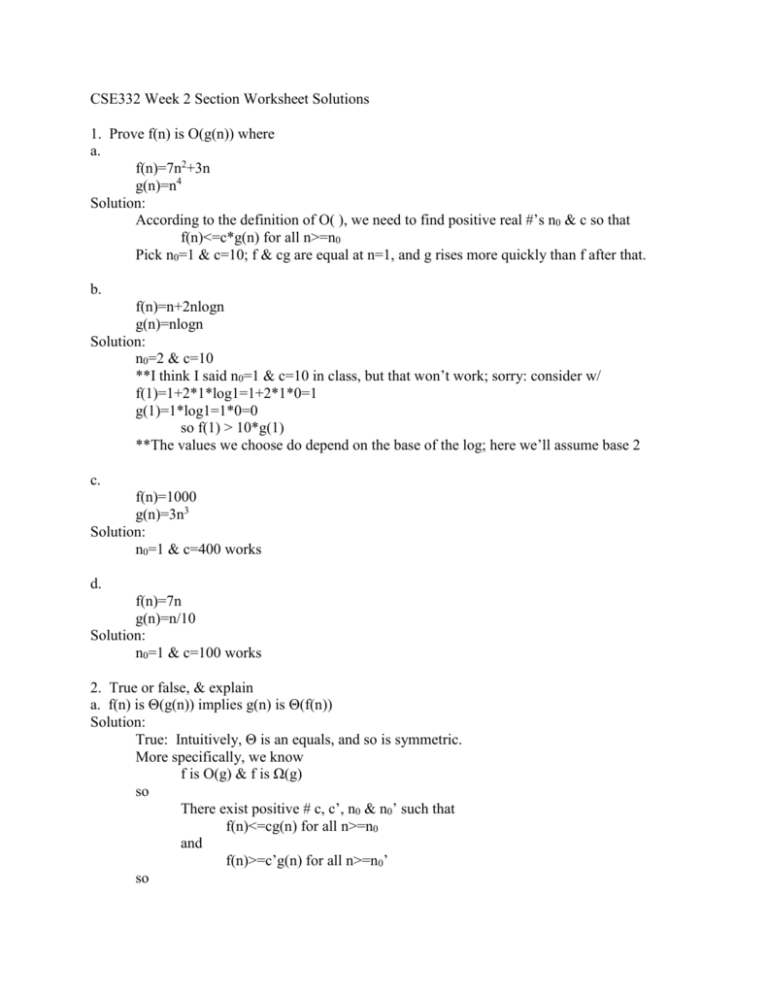
CSE332 Week 2 Section Worksheet Solutions 1. Prove f(n) is O(g(n)) where a. f(n)=7n2+3n g(n)=n4 Solution: According to the definition of O( ), we need to find positive real #’s n0 & c so that f(n)<=c*g(n) for all n>=n0 Pick n0=1 & c=10; f & cg are equal at n=1, and g rises more quickly than f after that. b. f(n)=n+2nlogn g(n)=nlogn Solution: n0=2 & c=10 **I think I said n0=1 & c=10 in class, but that won’t work; sorry: consider w/ f(1)=1+2*1*log1=1+2*1*0=1 g(1)=1*log1=1*0=0 so f(1) > 10*g(1) **The values we choose do depend on the base of the log; here we’ll assume base 2 c. f(n)=1000 g(n)=3n3 Solution: n0=1 & c=400 works d. f(n)=7n g(n)=n/10 Solution: n0=1 & c=100 works 2. True or false, & explain a. f(n) is Θ(g(n)) implies g(n) is Θ(f(n)) Solution: True: Intuitively, Θ is an equals, and so is symmetric. More specifically, we know f is O(g) & f is Ω(g) so There exist positive # c, c’, n0 & n0’ such that f(n)<=cg(n) for all n>=n0 and f(n)>=c’g(n) for all n>=n0’ so g(n)<=f(n)/c’ for all n>=n0’ and g(n)>=f(n)/c for all n>=n0 so g is O(f) and g is Ω(f) so g is Θ(f) b. f(n) is Θ(g(n)) implies f(n) is O(g(n)) Solution: True: Based on the definition of Θ, f(n) is O(g(n)) c. f(n) is Ω(g(n)) implies f(n) is O(g(n)) Solution: False: Counter example: f(n)=n2 & g(n)=n; f(n) is Ω(g(n)), but f(n) is NOT O(g(n)) 3. Find functions f(n) and g(n) such that f(n) is O(g(n)) and the constant c for the definition of O( ) must be >1. That is, find f & g such that c must be greater than 1, as there is no sufficient n0 when c=1. Solution: Consider f(n)=n+1 g(n)=n we know f(n) is O(g(n)); both run in linear time Yet f(n)>g(n) for all values of n; no n0 we pick will help with this if we set c=1. Instead, we need to pick c to be something else; say, 2. n+1 <= 2n for n>=1 4. Write the O( ) run-time of the functions with the following recurrence relations a. T(n)=3+T(n-1), where T(0)=1 Solution: T(n)=3+3+T(n-2)=3+3+3+T(n-3)=…=3k+T(0)=3k+1, where k=n, so O(n) time. b. T(n)=3+T(n/2) , where T(1)=1 Solution: T(n)=3+3+T(n/4)=3+3+3+T(n/8)=…=3k+T(n/2k) we want n/2k=1 (since we know what T(1) is), so k=log2n so T(n)=3logn+1, so O(logn) time. c. T(n)=3+T(n-1)+T(n-1) , where T(0)=1 Solution: T(n)=3 + (3+T(n-2)) + (3+T(n-2))= 3 + (3+(3+T(n-3))+(3+T(n-3))) + (3+(3+T(n-3))+(3+T(n-3))) We can tell the # of calls to T( ) is doubling every time we expand it further, so it runs in O(2n) time. 5. What’s the O( ) run-time of this code fragment in terms of n: int x=0; for(int i=n;i>=0;i--) if((i%3)==0) break; else x+=i; Solution: At a glance we see a loop and it looks like it should be O(n); it looks like we go through the loop n times. However, that ‘break’ makes things a bit weirder. Consider how the loop will work for any real data; we start at some n, count backwards until the value is a multiple of 3, at which point we break. So the loop’s code will run at most 3 times (not a function of n); so the whole thing is O(1). **Recall that ‘%’ is the remainder operator; i%3 divides i by 3 and returns the remainder (which will be 0, 1 or 2).
